

Plant Bulbs Now For Spring Color
Take the time in the fall to plant bulbs and enjoy the first signs of spring in late January.
Subscribe to the Blog >
By Jessamyn Tuttle, Skagit County WSU Extension Master Gardener
Bulbs are an important part of the spring garden. They provide color and interest when it’s most appreciated, as well as food for early pollinators. After putting on a spectacular show throughout spring, bulbs then fade into dormancy and let the summer garden do its thing.
To make that happen, however, the work of planting bulbs needs to happen in the fall. It’s strangely satisfying to put dry, dormant bulbs into the garden on a blustery October day, knowing that in just a few short months they will be shooting up new growth and flowers.
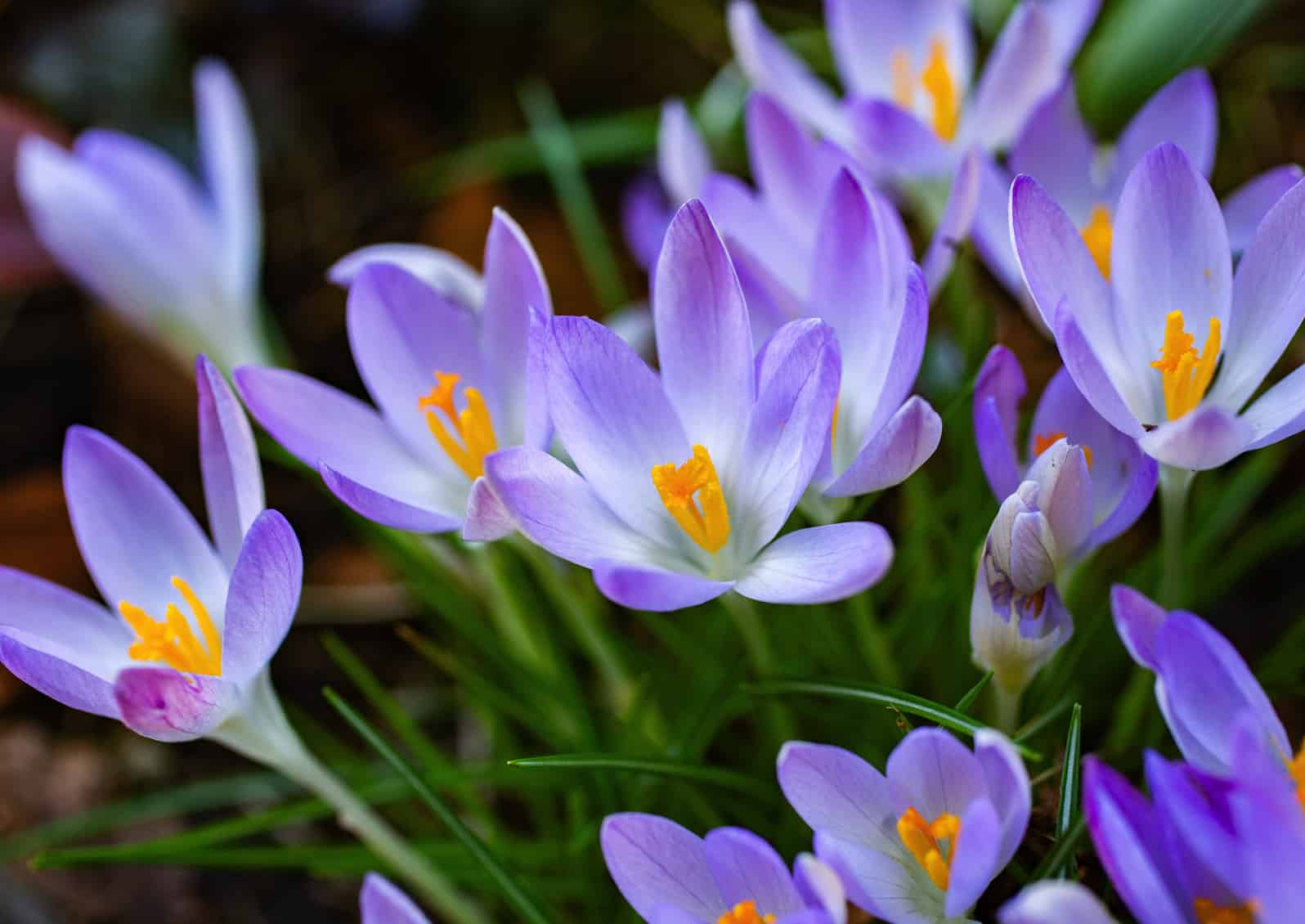
Crocus tommasinianus © Jessamyn Tuttle
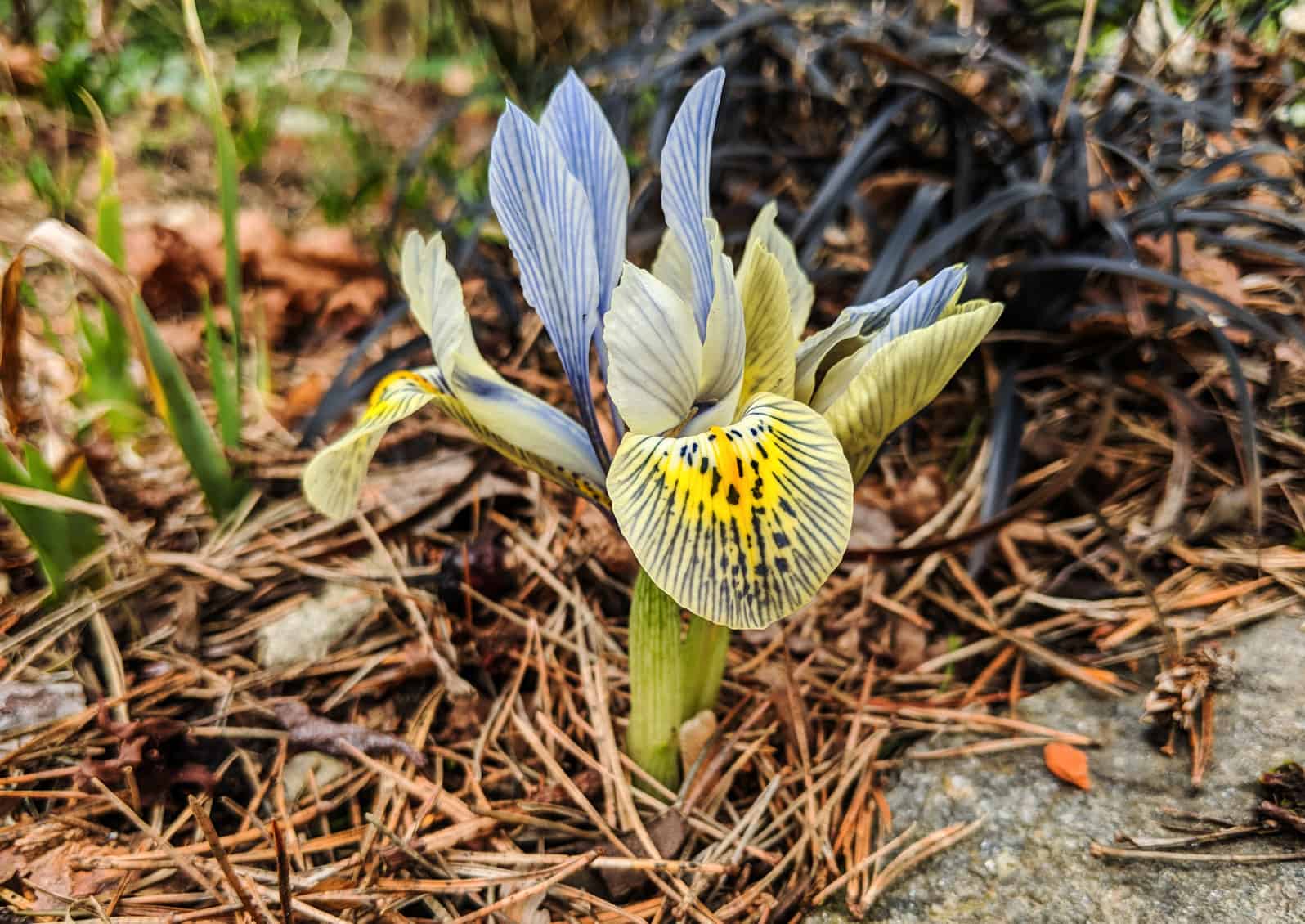
Iris histrioides ‘Katharine Hodgkin’ © Jessamyn Tuttle
Early Bloomers
The first bulbs to bloom here in Western Washington are typically snowdrops (Galanthus spp.), often emerging in January but coming into their full bloom in late February. Whether planted in clumps or a massive drift, snowdrops are a sure sign that spring is on the horizon. Snowdrops are always white with green or yellow markings, the double-flowered varieties are particularly charming.
Winter aconite (Eranthis hyemalis) is a tuberous member of the buttercup family, providing a vivid spot of yellow surrounded by a frill of greenery. It blooms around the same time as snowdrops with a bonus in that it’s resistant to deer and rabbits.
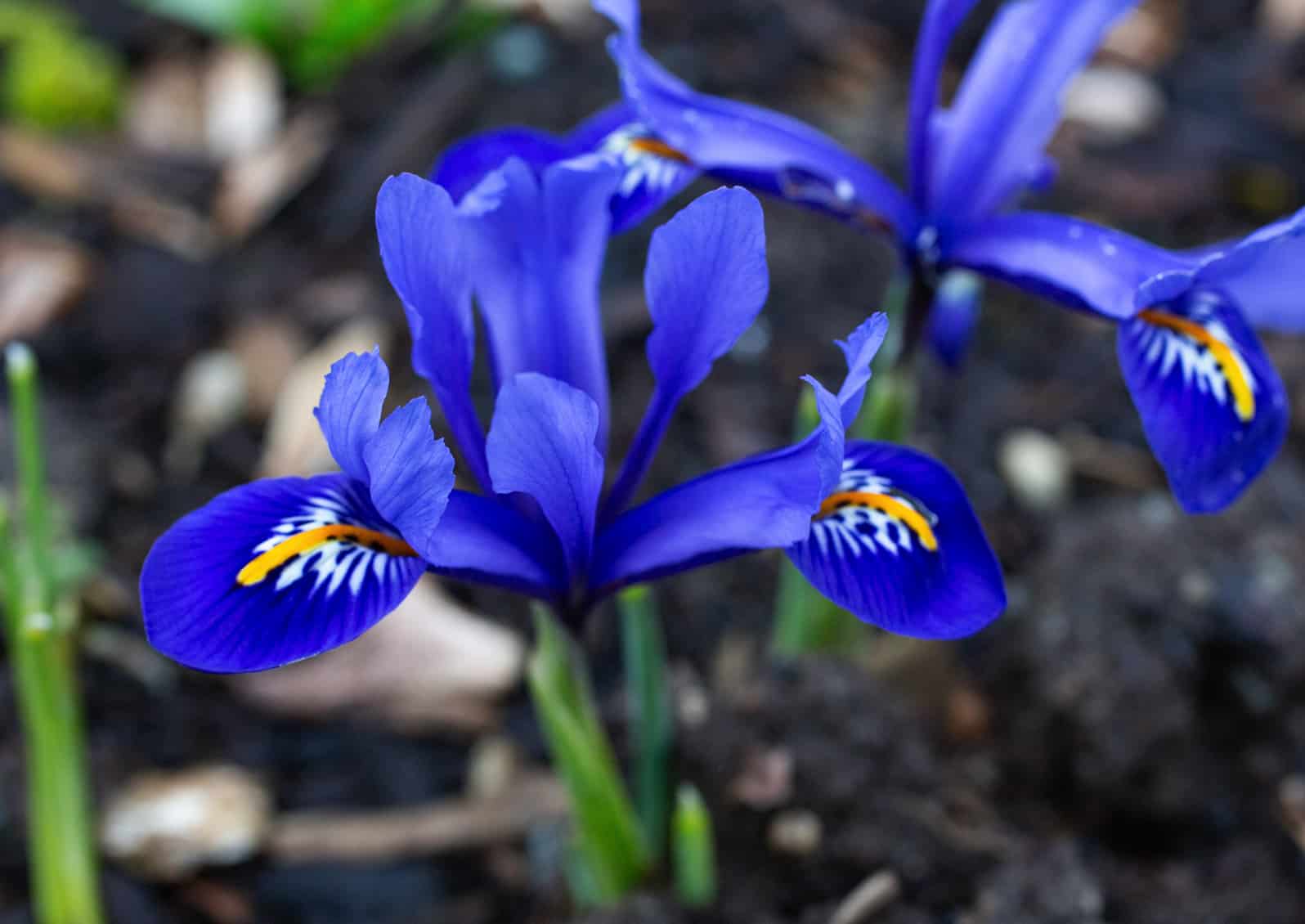
Iris reticulata ‘Harmony’ © Jessamyn Tuttle
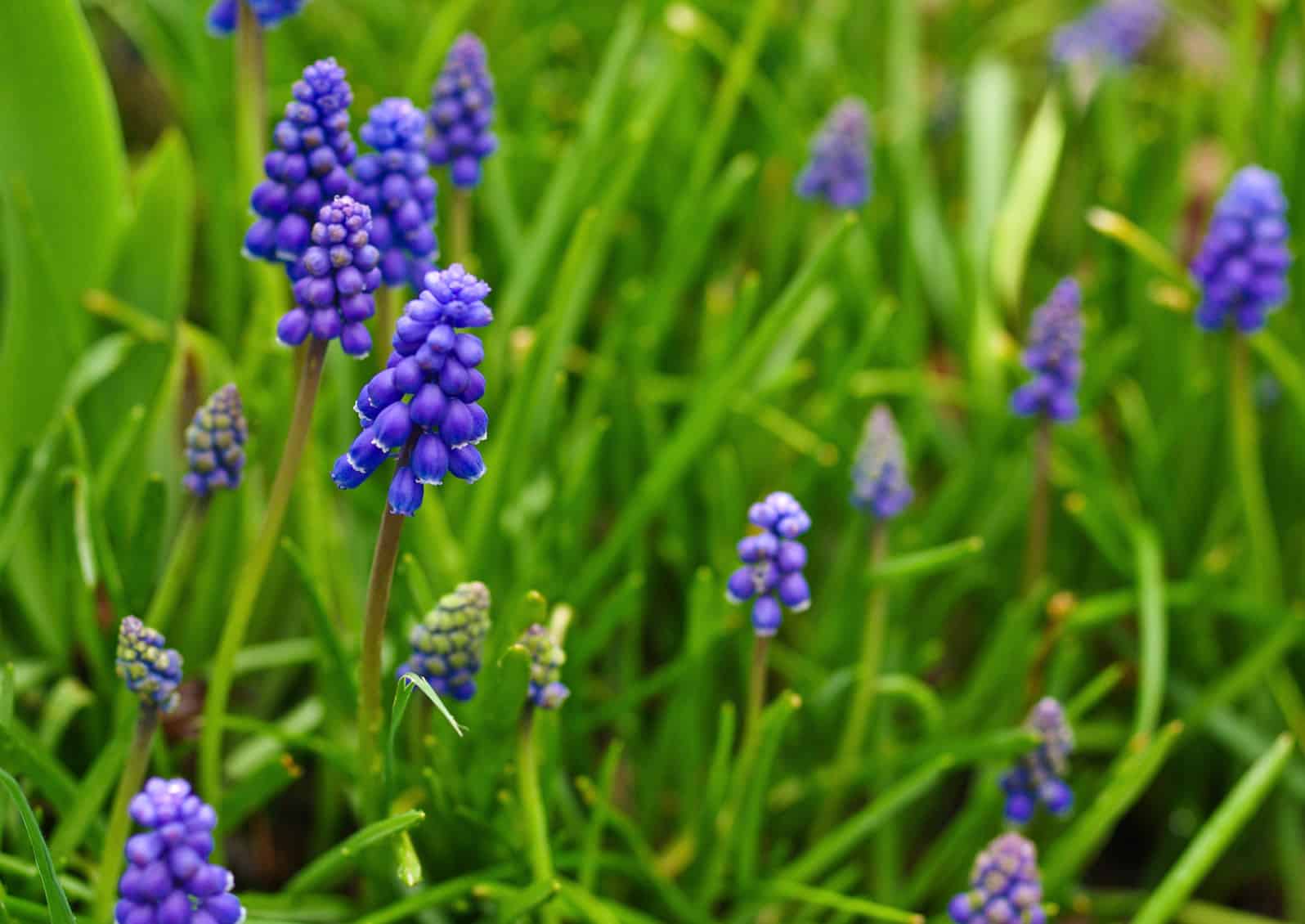
Muscari © Jessamyn Tuttle
Miniature iris, also called rock garden iris or bulbous iris, begin blooming in February. Unlike bearded irises, which grow from rhizomes, these come from small bulbs and are easy to slip into the garden wherever you have a bit of space between plants, especially those that go dormant in the winter. The miniature iris flowers are only a few inches across and sit on short stems. They are unfortunately wildly popular with slugs, so you may need to get out in the garden with slug bait earlier than usual to protect them. The most commonly available species, Iris reticulata, comes in white, blue, and purple. You can also find bright yellow I. danfordiae, or look for the fancy veining of I. histrioides (‘Katharine Hodgkin’ is a particular favorite.)
Crocuses pop up on the heels of snowdrops. Their grassy foliage comes up from the corm in February or March, followed quickly by delicate flowers in brilliant colors including white, yellow, lavender, and deep purple. They only open on sunny days, protecting their fragile petals from rain. The earliest varieties, commonly called snow crocus, include smaller-flowered species like Crocus chrysanthus and Crocus tommasinianus, which come in a lovely range of colors and patterns. The larger cultivars, sometimes called Dutch crocus, like C. vernus ‘Pickwick’ and ‘Jeanne d’Arc’ appear a few weeks later. Crocuses are deer-resistant, although not slug-resistant. Crocuses can be planted in swathes in lawns if you’re able to hold off on mowing until the foliage has ripened, otherwise, they fit nicely anywhere in the garden where they will get some sun.
Muscari armeniacum, also known as grape hyacinth, is a wonderful addition to the spring garden thanks to its pure blue color (they also come in white, purple, and pink). Muscari spreads with enthusiasm by both seed and bulb offset, so be aware of the commitment you’re making when planting it. Blooming in March and April, it makes a perfect companion for daffodils. A slightly earlier option for blue flowers is Chionodoxa or Glory-of-the-Snow. These deceptively fragile little blossoms pop out of seemingly nowhere and look their best when planted en masse. Species include C. luciliae and C. forbesii, among others, and also come in pink and white.
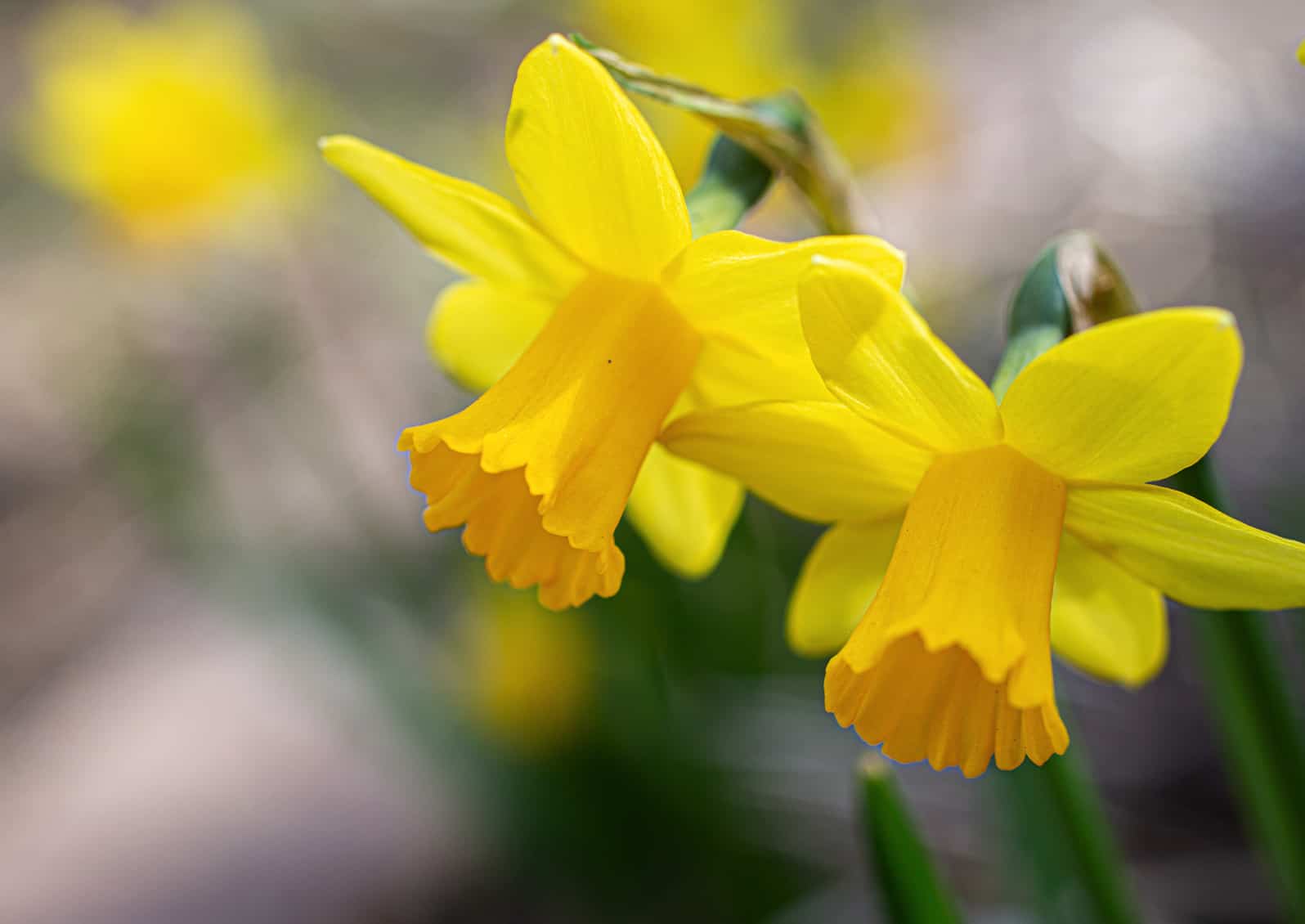
Tete a tete miniature Narcissus © Jessamyn Tuttle

Snowdrops © Jessamyn Tuttle
The Narcissus Family is Wide and Diverse
While the most commonly seen type of narcissus is the large yellow trumpet daffodil like ‘King Alfred’ or ‘Dutch Master,’ there are hundreds of varieties to choose from, including early blooming miniatures like ‘Tete a Tete,’ a tiny yellow trumpet narcissus, which is often available in pots very early in the season, but does just as well planted out in the garden, often coming up through a layer of snow. ‘February Gold’ is a slightly taller yellow miniature, while ‘Jack Snipe’ is a handsome dwarf Narcissus featuring a yellow trumpet surrounded by white, swept-back petals.
For a real punch, the distinctive Narcissus ‘Jetfire’ offers bright yellow and red-orange blooms. One of the very earliest daffodils, however, is ‘Rijnveld’s Early Sensation’ which produces a full-size trumpet daffodil flower a full month before other daffodils, an impressive show that sometimes gets cut abruptly short by a late winter snowfall or windstorm.
Later blooming varieties include the big trumpet daffodils but also the small cup, doubles, and large cup, like the classic ‘Ice Follies’ with its white petals and flat yellow cup, and the pretty, fragrant tazetta daffodils like the delightful white and orange cultivar ‘Geranium.’ Late season brings the delicate, backswept flowers of Narcissus poeticus var. recurvus, also known as ‘Pheasant Eye’ daffodil.
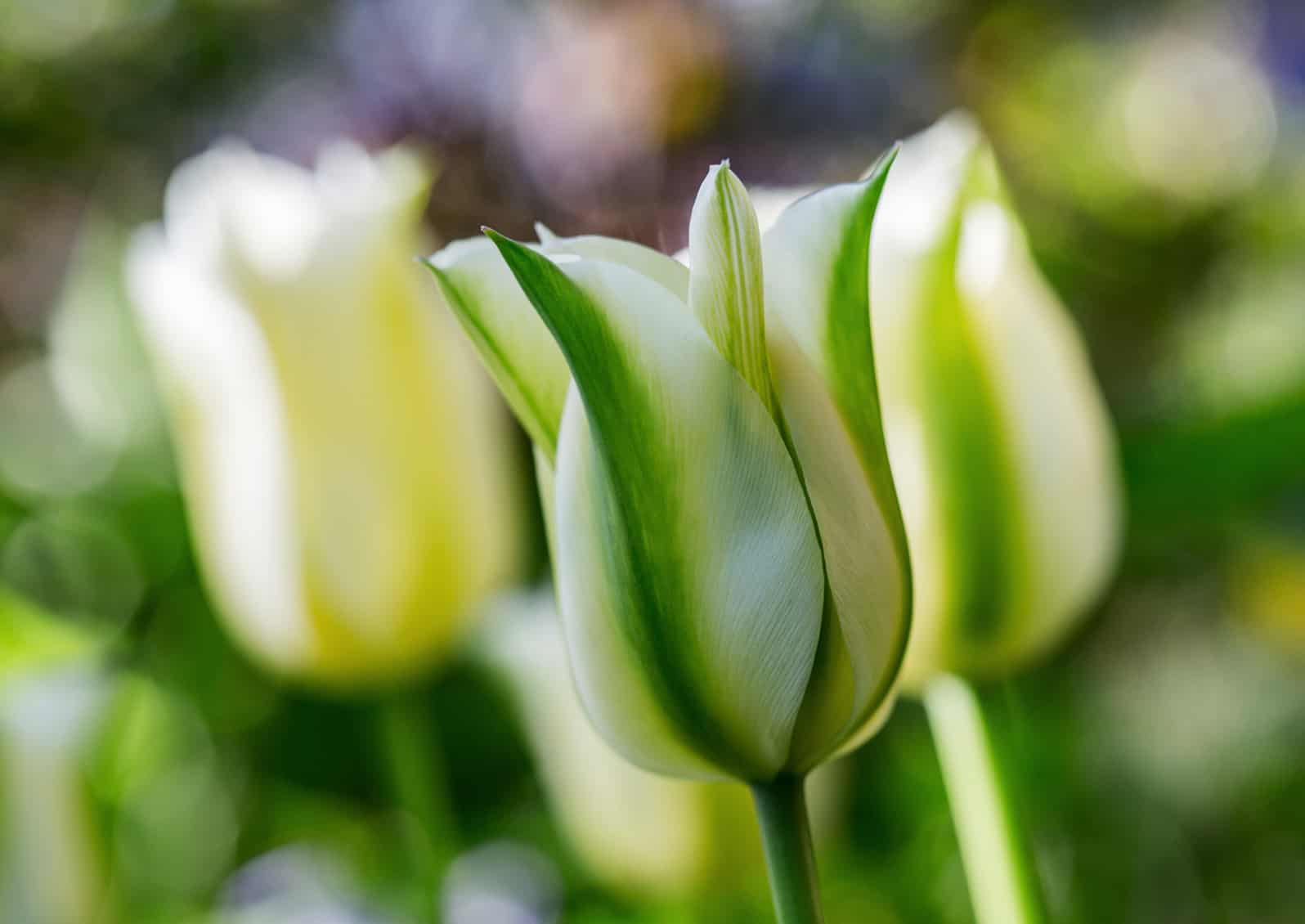
‘Spring Green’ tulip © Jessamyn Tuttle
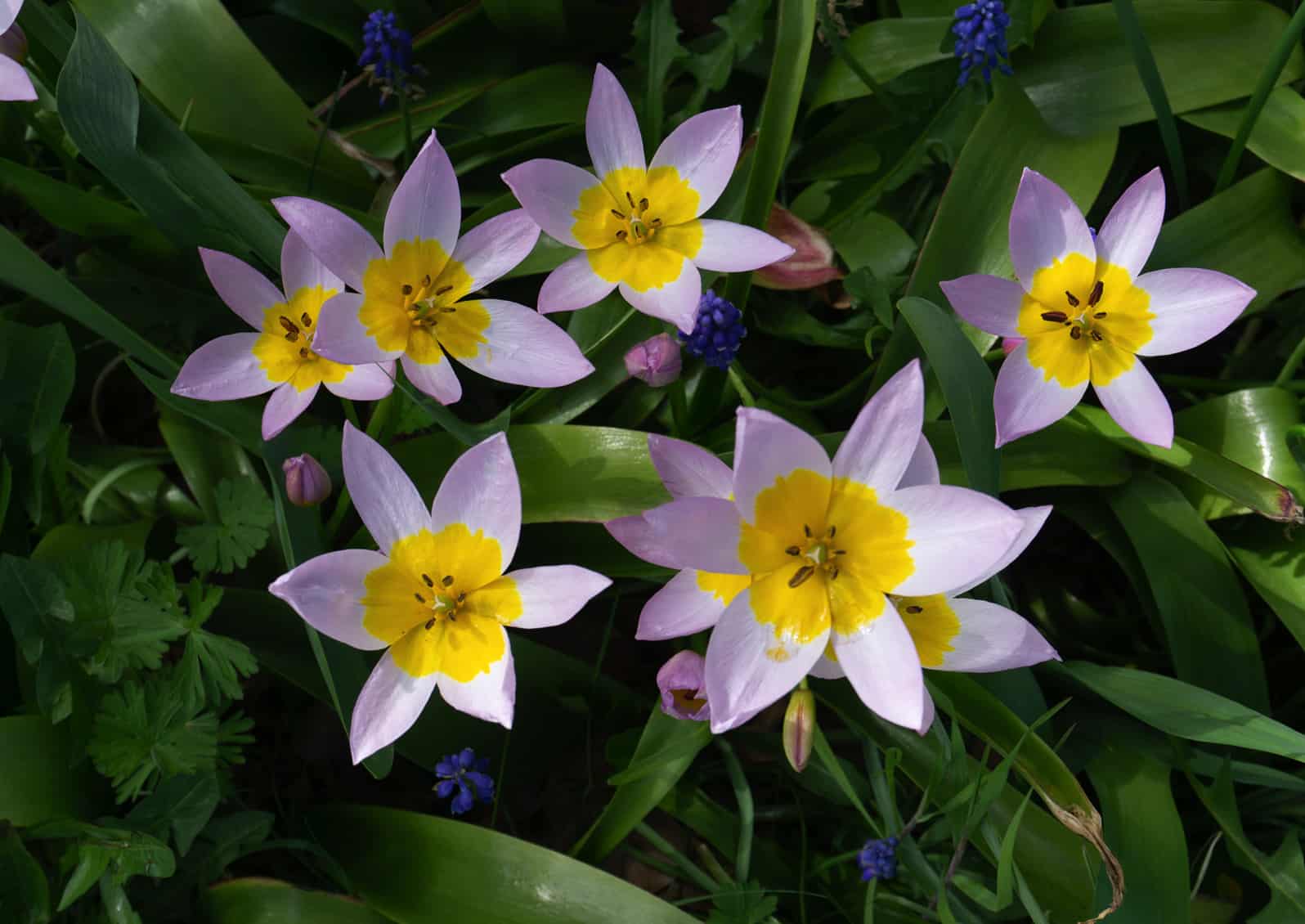
Tulipa saxatilis © Jessamyn Tuttle
The Pinnacle of Spring
For many people, especially here in Skagit Valley, the pinnacle of spring is when the tulips bloom. There are many, many varieties of tulips, including single early, single late, doubles, parrots, triumph, Darwin hybrids, emperor, and fringed, each with its own bloom time and flower type. They come in every color except blue, from ‘Spring Green’, a white tulip with pale green stripes to the nearly black ‘Queen of Night.’
There are also species of tulips which are less showy than the big hybrids but very hardy and great for naturalizing in the garden. Tulipa saxatilis is a vigorous spreader that carpets the ground with showy lavender-pink flowers with brilliant yellow centers, while T. batalinii ‘Bright Gem’ has blue-green foliage topped with yellow or apricot flowers streaked with pink.
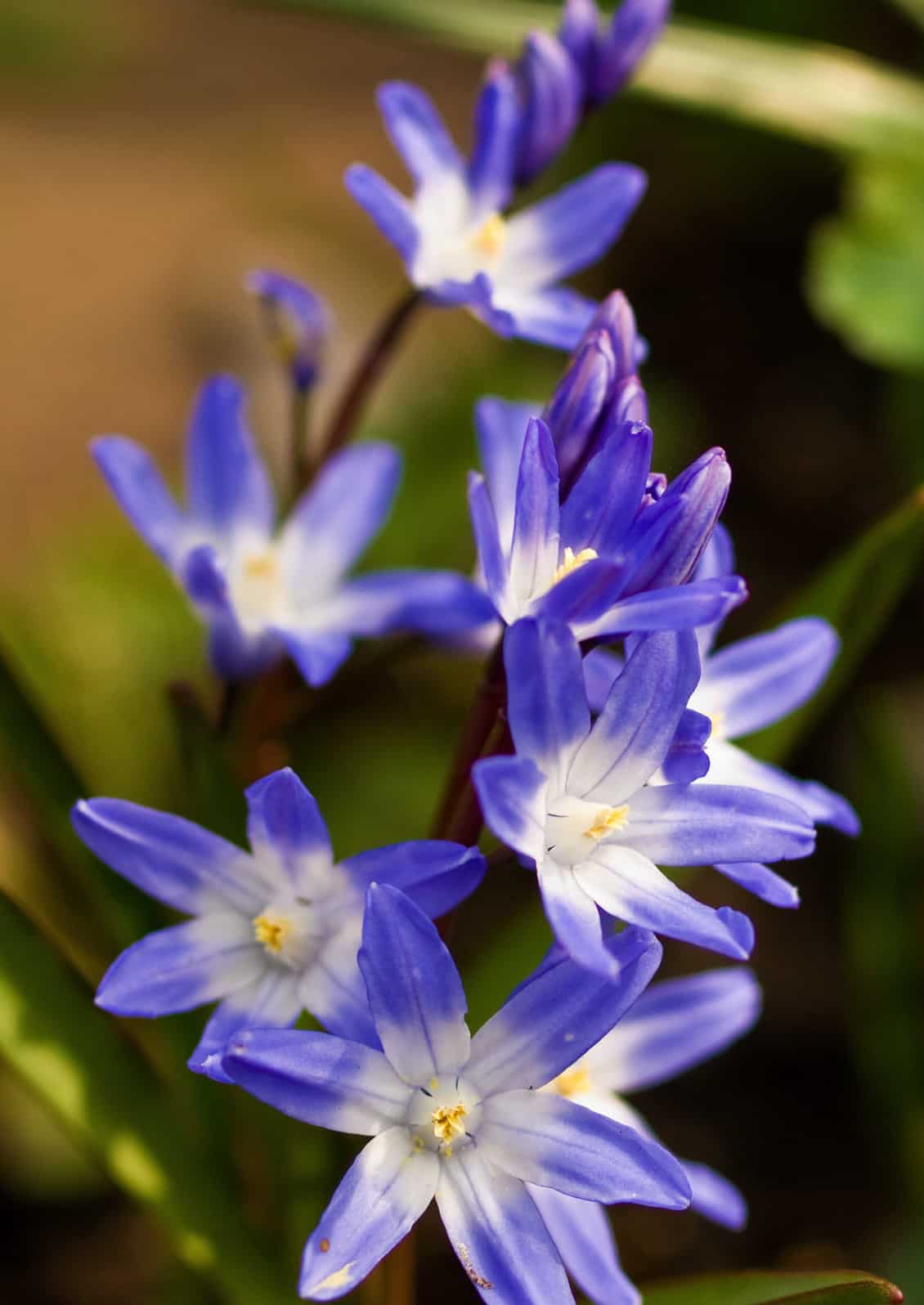
Chionodoxa, or glory-of-the-snow © Jessamyn Tuttle
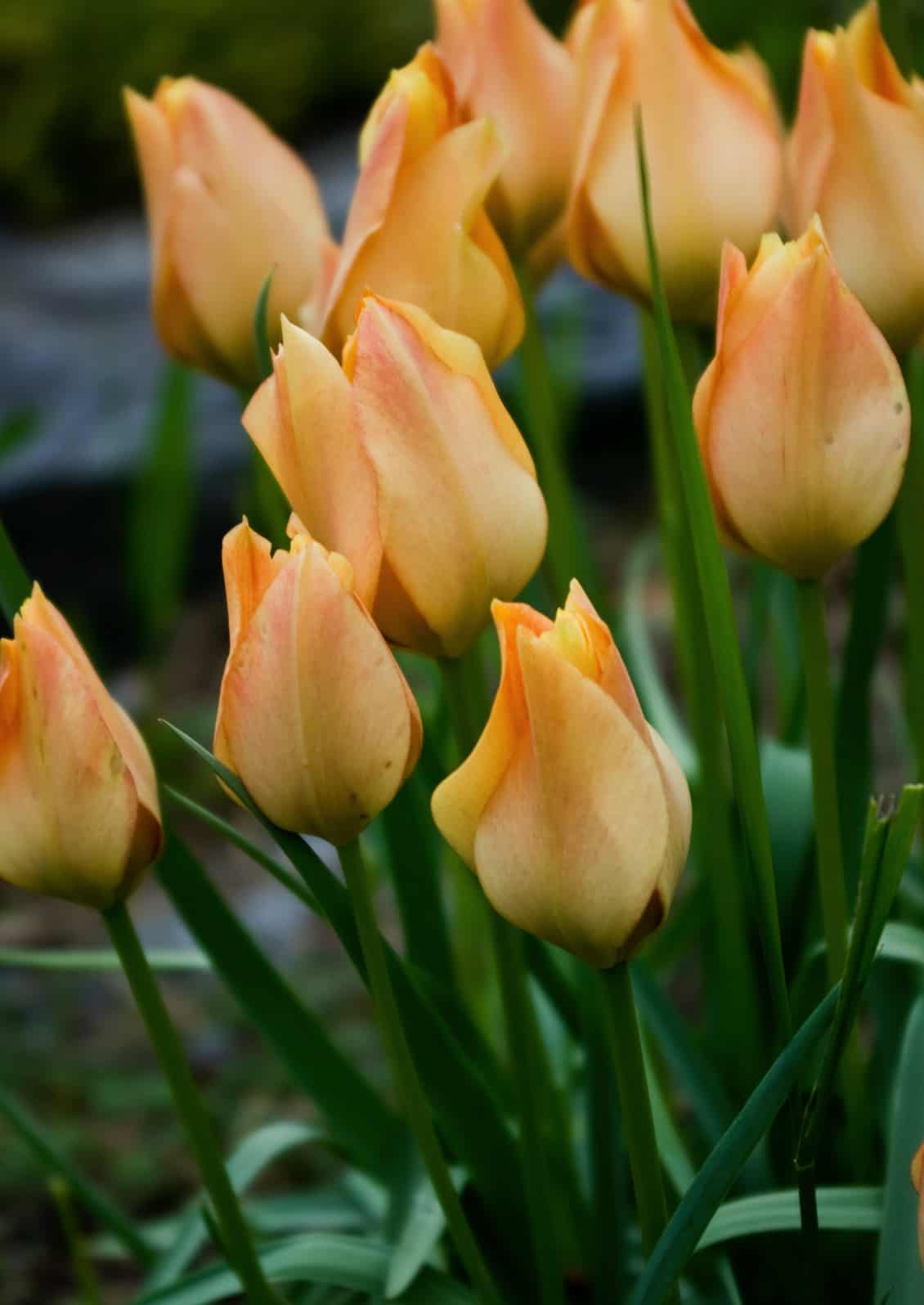
Tulipa batalini ‘Bright Gem’ © Jessamyn Tuttle
Planting Spring Bulbs
The rule for most bulbs is to plant in late fall or early winter, setting them at a depth 2-3 times the size of the bulb. Not planting bulbs deep enough is often what causes them, especially tulips, to vanish instead of coming back year after year. Pick a spot with full or at least part sun, and well-draining soil. Bulbs do not do well in damp spots. You can add some bulb fertilizer to the soil while planting if you like. Small, early-blooming bulbs can be tucked in throughout a garden bed, but all bulbs look beautiful planted together in a group to make swathes of color in the spring.
Bulbs should be well watered at the time of planting and while actively growing and flowering but do best when allowed to stay mostly dry through their summer dormancy. And if you want your bulbs to come back next year, don’t cut the foliage down until it has ripened, since the leaves are what provide the bulb with food for the next season.
If you plant every bulb listed here, you should have a succession of colors starting in January until the rest of the garden fills out in May. Enjoy!
Botts, B. Early spring bulbs. Chicago Botanic Garden https://www.chicagobotanic.org/plantinfo/smart_gardener/early_spring_bulbs
Slade, N (2014). The plant lover’s guide to snowdrops. Timber Press.
Austin, C (2005). Irises: A gardener’s encyclopedia. Timber Press.
 ABOUT THE AUTHOR:
ABOUT THE AUTHOR:
Jessamyn Tuttle is a Skagit County WSU Extension Master Gardener, Class of 2017. She is co-manager of the Plant House and also coordinates the Iris Garden room in the Discovery Garden on Hwy 536 west of Mount Vernon.
_________
Questions about home gardening or becoming a Master Gardener, may be directed to: Skagit County WSU Extension Office, 11768 Westar Lane, Suite A, Burlington, WA 98233; by phone: 360-428-4270; or via the website: https://extension.wsu.edu/skagit/mg/
